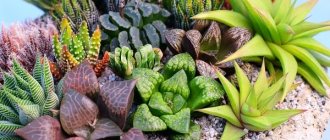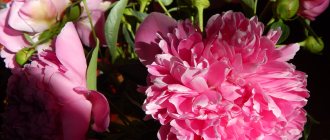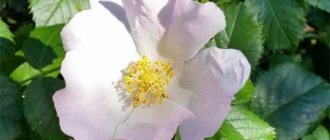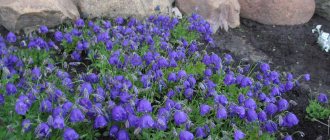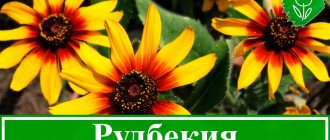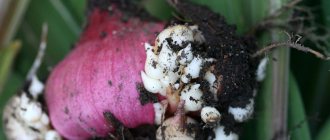Syngonium, which belongs to the lianas, is distinguished by its species diversity, different leaf shapes and colors. It is the variety of its forms that allows you to introduce novelty into the interior of the room. Syngonium can be grown as an ampelous plant in a hanging pot or you can install a support for it, along which the shoots will twine and grow in height. Caring for syngonium at home is quite simple.
Description and origin of the plant
Syngonium is an evergreen epiphytic vine. This plant belongs to the Araceae family and can be found in nature in South and Central America, as well as in Brazil. Syngonium grows on tree trunks, and its tenacious shoots climb and curl around surfaces, aiming for the sun.
Young vines have pale green stems; they, like the leaves, participate in the process of photosynthesis. As it grows, the skin becomes rougher and changes color to brownish. Fresh shoots of Syngonium are thin, and as they grow they thicken. On average, the diameter of Syngonium stems is about 1-2 cm, and old branches can grow up to 4-6 cm. Usually the stems of the vine do not branch, but if a branch is broken or cut, then after a while fresh shoots begin to appear from the nodes.
In nature, Syngonium can grow up to 15-20 m, but at home its dimensions are much more modest and rarely exceed 2 m. Flexible and elastic shoots of the vine can grow up to 30 cm per year. During this time, the plant usually adds 6-7 new leaves.
Syngonium leaves, depending on the species, can have a wide variety of shapes. There are species with heart-shaped, spear-shaped, arrow-shaped or three-lobed leaf blades, while a plant of one species at a young age can grow foliage of a solid form, and at a more mature age acquire the features of dissected lobed ones. The color of the leaves can also be varied. While some species have leaf blades of a uniform green color, others boast a more original color. There are varieties with almost white leaf blades framed by a bright green border, and there are also types with yellow, red and pink spots, various strokes and specks.
The color intensity of Syngonium leaves depends on the lighting. Often, with a lack of light, variegated and colored leaves acquire a uniform green color.
It is difficult to achieve flowering of Syngonium indoors. In the natural environment, in the spring, unsightly inflorescences-cobs of a greenish color begin to form, almost completely covered with a pinkish or red bract-veil. Syngonium flowers are characterized by cross-pollination. Female and male flowers appear in different parts of the inflorescence-cob. Female flowers are located closer to the base, and male flowers are located at the top of the inflorescence. After pollination, cylindrical and ovoid aromatic fruits begin to form. Each fruit berry contains about 100 small seeds, which are carried by birds and animals that feed on Syngonium fruits.
The aerial roots of Syngonium are formed at the nodes of the shoots and help the vine to cling to supports or crawl along the soil cover. Feeding roots can also be distinguished at the nodes. Usually this is a single process that is slightly larger in size and deviates slightly to the side. Such a developed system allows the plant to obtain food from the soil and other surfaces.
How syngonium blooms
Flowering of syngonium is possible only in natural conditions. The plant begins to bloom in late spring and occurs in the form of cobs. In total there are 6-10 pieces on the plant. colors. In all varieties, the inflorescences are arranged vertically. The flowers are dense, cream-colored. Half of them are hidden by pinkish or bright red petals. Flowers have no scent. Pollination occurs in a cross way.
Episcia flower - types and varieties of indoor plants
The female type flowers begin to bloom first. Their pollination occurs from neighboring inflorescences. When male flowers mature, female flowers are no longer susceptible to pollination. The petals close tightly and those insects that get out collect pollen on themselves. Then they distribute it to the flowers that are in the neighborhood. The vine opens its buds only for three days. The blanket then covers the ear, causing it to resemble an ear of corn.
As a result of such a complex pollination system, the fruits ripen. They are berries in the form of a cylindrical or ovoid shape. Their edges are rounded. The length of the fruit is 0.5-1 cm and the width is 3-6 mm. The berries are fragrant and juicy. They are eaten by monkeys, who spread them over long distances.
Important! If the leaf is damaged, milky juice is released. If contact occurs with damaged areas of the skin or mucous membranes, it may cause burning and irritation. For this reason, working with the plant must be done with gloves. Syngonium is a poisonous plant, so animals and children should not be allowed to come into contact with it.
Is it possible to keep Syngonium at home?
Syngonium has been successfully cultivated as a houseplant for quite some time. During this time, the vine has become “overgrown” with various superstitions and signs, some of which are good and bad.
Syngonium has one unusual property - its leaves begin to “cry” when the air and soil humidity are high. This is how the plant gets rid of excess water and removes it, releasing it in droplets on the surface of the leaf blades. It is believed that in this way Syngonium can “predict” rain, since before precipitation falls, the level of air humidity rises. The same property also manifests itself with excessive watering, then the plant begins to “cry” if the soil in the pot is waterlogged.
Also, many may have heard that Syngonium in the house is a “husband’s husband.” Many vines have received such “fame,” but this is just a belief, so you should not be afraid that an ordinary indoor flower can destroy a family unit or scare men away from a lonely girl.
According to the ancient practice of Feng Shui, plants with sharp edges and ends have a negative effect on the inhabitants of the house. The arrow-shaped leaf plates of Syngonium emit “poisonous breath” that poisons human life. Therefore, in order to neutralize this energy, you can place protective amulets, talismans and other items next to the pot.
Poisonous or not for humans
Like other representatives of the Aroids, Syngonium is poisonous. The milky sap contained in all parts of the plant, when it comes into contact with the skin and mucous membranes, causes severe irritation. It is especially dangerous if juice enters the body, since toxic substances cause severe poisoning. When working with this flower, it is important to take care of personal protective equipment, and then wash your hands thoroughly with plenty of soap and water.
Despite this, you should not give up growing this highly decorative vine. Since at home they most often try to place the plant in hanging pots, it can be installed at such a height that pets and children cannot reach it.
Table: conditions necessary for syngonium
| Humidity | Temperature | Light | |
| Spring Summer | Syngonium prefers high air humidity. In summer, it is recommended to frequently spray the flower with warm water, and wipe the leaf blades with a damp cloth or sponge to prevent the appearance of pests. | The most comfortable temperature is +18–24 °C. | The plant is shade-tolerant and does not like direct sunlight; syngonium needs soft, diffused lighting. The best option for placing the flower would be an east-oriented window. It can also be placed inside the room, placed on a shelf or table. |
| Autumn winter | There is no need to spray the syngonium. It is enough to place it in a tray with wet expanded clay or peat if the flower is located near a heating radiator. | The temperature of the syngonium should be at least +17–18 °C, however, the plant can tolerate a short-term drop of up to 10 °C, but you should not expose the flower to hypothermia for too long. | Additional lighting is required in the morning and evening hours so that the shoots do not stretch too much and become brittle and brittle. |
Types with photos and names
The fast-growing evergreen vine is undoubtedly attractive in any form. Various types of Syngonium are very popular among gardeners. They all have their own features that give them a special decorative quality.
Pixie
Dwarf variety Syngonium Pixie with small heart-shaped oval leaves of bright colors. The surface of the leaves is shiny, bright green with a light spot in the center and veins of the same color.
Arrow
Another compact variety. Syngonium Arrow has small, variegated, arrow-shaped leaves with green leaves adorned with white veins. This variety looks very cute. When grown, Syngonium Arrow does not have a capricious character and grows quickly if there is suitable support.
Butterfly
The large-leaved variety Syngonium Butterfly is very popular in floriculture. This vine can grow up to 1.5 m long. The leaves of the variety are distinguished by their rare, almost white color. In bright light, the arrow-shaped leaf blades begin to lighten from the midrib and become almost completely white.
Pink Spot
The unusual Syngonium Pink Spot can be grown in the form of a bush or ampel. The variety is distinguished by its rapid growth and characteristic creamy-pink leaves, which are decorated with crimson specks. Old leaves are noticeably paler. If the plant stands in a well-lit place, then its foliage will soon acquire a lighter color.
Pink Splash
The large dark green leaves of Syngonium Pink Splash are decorated with spots and specks of soft pink color.
Brocant
The leaf blades of Syngonium variety Brocant have a greenish-brown color with a pronounced glossy sheen. The veins on the leaves are red or pink.
Confetti
The Syngonium Confetti variety is quite rarely found on sale. The arrow-shaped leaf blades are strewn with pink and yellow splashes and specks. A characteristic feature of the variety is not only the unusual color of the leaves, but also their shape. Young leaves are arrow-shaped, but then they begin to change and take on the shape of an irregular star.
Panda
Syngonium Panda is characterized by rapid growth and good bushiness. The matte dark green leaves of this variety are decorated with light spots and strokes.
Legleaf
Syngonium Legleaf or Podophyllum can add about 45-60 cm per year. Its thin, elastic, climbing stems are decorated with large arrow-shaped rich green leaves. The leaves are planted on long leaf stalks, which can reach 35 cm. With age, the leaf blades acquire a dissected shape.
Auricular (Auricular)
The Syngonium auricularis species grows up to 2 m. The vine adds 70-90 cm per year. Its stems are strong and elastic with a diameter of about 1.5-2.5 cm, and become woody over time. The leaves, arrow-shaped when young, are covered with a waxy layer and colored dark green. Over time, the shape of the foliage changes to dissected and acquires characteristic small “ears” at the base of the plate. The length of the leaf blades is about 6-20 cm, and the width is about 24 cm. The leaves are planted on thin green petioles about 15-40 cm long.
Wendlanda
Although Wendland's syngonium is not characterized by vigorous growth, it has good tenacity. Its shoots attach perfectly to any support. The leaves of this vine are velvety, matte, divided into 3 segments, spear-shaped, and colored deep green. The central longitudinal vein on the surface of the leaves is white and pronounced.
Pink
The arrow-shaped leaves of Syngonium Rosea have a light pinkish tint and a soft green edge. Young leaves have a pronounced light pink color, but over time they become pale, greenish, with red veins.
Mini Pink
The miniature and neat variety Syngonium Mini Pink is decorated with small spear-shaped leaves with a pointed end. The surface of the leaves is dark green with pink veins.
Useful properties of the plant
In the house, Syngonium creates the atmosphere of a small tropical corner. Thanks to its rapid growth, this vine quickly fills the space provided to it, and many gardeners note its positive effect on the microclimate in the house. Syngonium has a beneficial effect on a person’s emotional state and the atmosphere in the room.
How does it affect the atmosphere in the house?
Despite the prevailing stereotypes, Syngonium is believed to protect family happiness. This flower is perfect for purposeful people, since, according to some opinion, thanks to its rapid growth, its owners solve all matters and problems much faster.
The strong leaves of Syngonium symbolize persistent character, the desire for development and personal growth of its owner. Tropical liana fills the space with life and energy.
Health effects
It is believed that Syngonium in the home has a beneficial effect on the human digestive system and contributes to the speedy cure of gastrointestinal diseases. By acquiring this tropical plant, many believe that illnesses will bypass them, and old diseases will soon be cured.
Effect on emotional state
Syngonium willingly shares its energy with the inhabitants of the home. If placed in the bedroom, it will help relieve tension, organize thoughts and get rid of nightmares.
The rapid growth of the plant helps its owner overcome the fear of the future, open new boundaries in communication with other people and overcome their complexes. For people with conservative views, Syngonium will give them a craving for new things, calm them down, and “teach” them loyalty and tolerance.
By transforming the shape of its leaves, Syngonium helps the owner himself to transform. It is great for creative people and intellectuals.
Benefits, signs and superstitions
In city conditions, syngonium is an excellent solution for apartments and houses. It not only perfectly refreshes the interior, but filters air masses, eliminating the negative effects of hazardous elements.
The plant acts as a stabilizer of the level of humidity and oxygen saturation of the air in the room . But superstitious people often wonder whether it is possible to keep syngonium at home from the point of view of folk wisdom.
Among the people there are absolutely opposite signs and superstitions associated with keeping syngonium at home. According to the interpretation of some, if a person is sick, then the vine will help the owner regain strength and fight a very serious and sometimes incurable disease.
The plant helps strengthen morale and get rid of bad habits. When the owner is tormented by nightmares, it will protect his sleep. In other signs, syngonium is considered a muzhegon: male representatives in the housing where this plant grows do not get along, and the owners face the fate of an old maid. But these are just superstitions that have no justification.
So, keeping such an exotic plant in the house will not cause trouble for the owner, but it will amaze him with its varied colors and have a beneficial effect on health.
Home care
Even a novice gardener can care for Syngonium. This plant is very unpretentious and easily adapts to growing at home. By following simple rules, you can easily grow a healthy vine.
Choosing a seat in the room
At home, Syngonium is placed on the windowsill of an east or west window, the pot is placed on a stand, attached to a wall, or simply placed on a high chest of drawers or a closet. In this case, you should take care of the support. To do this, you can purchase a special support or stretch ropes and threads and allow the vine to freely cling to the surface.
It is better to protect Syngonium from working heating sources, so when choosing a corner to install a flower pot, it is important to ensure that the branches of the vine do not fall off and are not close to radiators and heaters.
What kind of pot and soil do you need?
Choose a tall, stable pot for planting with good drainage holes to remove moisture.
Syngonium is undemanding to soil composition. It grows well in loose, well-drained soil with a slightly acidic or neutral reaction (6-7 pH). A suitable soil mixture can be prepared from leaf substrate, turf, peat and sand (1/1/1/0.5). Coal, finely chopped brick, bark and bone meal are added to the finished soil.
Lighting
Syngonium is one of the shade-tolerant plants. He loves good light, but is afraid of intense sun exposure. In diffused light or in light partial shade, the flower will feel as if it were in its native, natural environment.
Species and varieties with monochromatic leaves feel best in a shaded place, while variegated, bright varieties, when exposed to too intense light, begin to lose their properties and acquire a pale, unsightly color.
Watering and spraying
In order for this wildly growing vine to grow and develop harmoniously, it is necessary to constantly maintain the earthen ball in a moderately moist state. In hot weather, Syngonium is watered abundantly, and with the arrival of winter, watering is reduced to moderate and the soil is moistened as the top layer of soil dries out.
If water has accumulated in the pan after watering, it must be drained. Water for irrigation must first be settled at room temperature.
In summer, Syngonium should be frequently sprayed with warm, soft water and the leaves should be wiped to remove dust.
Air humidity
Syngonium loves a moderately humid climate. In winter, it is removed away from working batteries, as dry air burns the beautiful leaves of the vine. To increase humidity, you need to frequently spray the leaves, install a household humidifier, an aquarium nearby, or place a flower pot on a tray with wet pebbles or expanded clay.
Feeding and fertilizer
From spring to autumn, Syngonium is fed with liquid mineral preparations for decorative foliage crops. When choosing a fertilizer for fertilizing, it is important to pay attention to the composition and give preference to fertilizer with a minimum calcium content. Nutrient formulations are applied once a month.
Pruning and crown formation
Syngonium tolerates pruning well and is easy to shape. It can be grown without pruning or pinching as an ampel form, or several branches can be planted in one pot at once to form a neat bush.
To make side branches appear more actively, shoots of Syngonium are pinched above 6-7 leaves. You can also form a beautiful tree with the help of vertical supports, which Syngonium shoots willingly entwine.
Rest period
In winter, Syngonium stops growing. At this time, they stop feeding it and reduce watering to once every 7 days.
Bloom
As a rule, it is almost impossible to achieve flowering of Syngonium at home. But when grown in a greenhouse in the spring, you can observe the appearance of a small inflorescence-cob. After the inflorescence wilts, it is better to remove it so that the plant does not waste energy feeding the seeds.
Errors in care and ways to eliminate them
Despite its unpretentiousness in terms of growing conditions and care, if it is placed incorrectly, there is a lack of light and the wrong watering regime is selected, Syngonium may experience discomfort. Most often, the following signs indicate errors in care:
- Changing the color of variegated leaves to a single color is a lack of light. The plant should be moved closer to the light source.
- Change in leaf color to paler, lack of shine - excessive watering or poor drainage. In this case, replanting into a new pot with holes and a high-quality drainage layer helps, and the watering regime is adjusted depending on the speed of drying of the top layer of the pot’s contents.
- Plaque, spots on the leaves - poor quality water for spraying. Stains and plaque are removed with a soft damp cloth or sponge, and the water for spraying is pre-boiled and cooled, or infused.
Possible difficulties during cultivation
When kept at home, the following difficulties may arise:
- Drying of the edges and tips of the leaves - dry air.
- Dark spots on leaf blades, burns - this is how the plant reacts to exposure to direct sunlight, waterlogging of the substrate, low air temperature and cold or hard water for irrigation.
- Pale, dull leaves signal high humidity in the room.
- Slow growth, young leaves grow small - lack of sun or nutrients.
- Yellowing of stems and leaves is an excess of nutrition; it is necessary to reduce the concentration of fertilizer or the frequency of fertilizing.
- The roots protrude above the surface of the earthen clod - transplantation into a new pot is required. If it is not yet possible to transplant the Syngonium, then you can add a little fresh substrate to hide the exposed roots.
Features of growing indoors
Cultivating a plant in an apartment does not cause problems, but a number of nuances should be studied.
Landing
Syngonium is planted in small containers with drainage holes.
To obtain the splendor of the plant, several shoots are planted simultaneously in one pot.
This variety of vine can be used as a hanging plant if its stems are allowed to hang freely from the pot. Forming a crown will allow you to become the owner of a unique tree.
Advice! To get the shape of a tree, when planting in the ground, you should install a reliable support that will allow the vine to crawl upward.
Transfer
Young specimens are replanted every spring , but as they grow older, the interval between procedures increases. To ensure a successful transplant, the following steps must be followed:
- Place expanded clay at the bottom of the planting container as a drainage layer;
- pour loose and fertile soil with weak acidity on top - a soil mixture of turf, sand and peat;
- Using the transshipment technique to avoid damage to the roots, complete the replanting of the perennial.
Attention! An adult representative of the tropics needs to be replanted after roots appear from the drainage holes.
Care
Caring for the plant is quite simple. The love of gardeners for syngonium is caused by its unpretentiousness, rapid growth and vitality.
- Lighting. The flower requires a long period of diffused light. When placing the pot on the windows on the western or eastern side, we must not forget about protecting the vine from the scorching sun at its zenith.
- Temperature conditions. Throughout the year, with the exception of the winter season, when a decrease to 18°C is permissible, the optimal temperature is in the range from 22 to 25°C.
- Watering and humidity. Tropical liana needs high levels of humidity, systematic watering and spraying. Spraying of shoots is carried out daily with purified water at room temperature. The soil should be watered with the same water at short intervals: the soil should not dry out deeper than 3 cm. Regular moistening makes it easier for the plant to cope with air drought.
- Feeding. Fertilizers in the form of aqueous solutions of special mineral complexes for ornamental plants are applied under the crop at a distance from the stems. Fertilizing can be done from mid-spring to mid-autumn.
- Trimming. Lana has good pruning tolerance. The shoots are pinched for the first time after three pairs of leaves have formed. If necessary, you can shorten any process. If the stem has become too old and bare, then pruning promotes the development of young side shoots.
- Protection from diseases and pests. A native of the tropics has a well-developed immunity to diseases and pests. However, in case of improper care for a long time, it is affected by powdery mildew, and harmful insects such as spider mites, scale insects or mealybugs are observed on the foliage. If detected, protective measures should be taken - a hot shower up to 45C and treatment with the insecticide Actellik or Aktara.
Disease and pest control
With proper care and maintenance conditions, Syngonium is rarely attacked by pests and almost never gets sick. A healthy plant has good immunity, but if a “green neighbor” infected with parasites or diseases appears nearby, then the disease soon spreads to all potted plantings.
Signs of rot
Rot affects Syngonium at low air temperatures and excessive watering. If the stems of the plant begin to darken, this indicates that the root system is damaged by gray rot. Then the damaged stems are cut off and the plant is replanted. During transplantation, the roots are cleared of soil, damaged areas are removed, the cuts are treated with charcoal, or the root system is washed with a weak solution of potassium permanganate. After this, Syngonium is transplanted into a new pot with a complete replacement of the substrate.
When a plant is infected with rot, it is better to immediately root the remaining healthy parts of the shoots.
Aphid
Aphids feed on the sap of young leaves and shoots. It is based in the lower part of the leaf blades, and the result of its activity is pale, yellow, deformed leaves that soon fall off. Aphids often appear at low air humidity and high temperature.
If the extent of the damage is still limited to only a few leaves, then they are simply removed, but in more advanced cases it is better to resort to the help of insecticides.
Shchitovka
Scale insects attack stems and leaves. Then you can notice a slowdown in the growth of Syngonium, partial or complete drying of the foliage. If measures are not taken in time, the vine will soon wither and die. Removing pests with a soapy sponge, a warm shower and treatment with insecticides helps.
Trips
Thrips settle on the lower part of the leaves, after which the surface of the plates becomes covered with light spots. In advanced cases, the entire leaf becomes grayish-brown and acquires a metallic sheen. In this case, the affected parts are removed, and the plant is treated with chemicals against pests.
Spider mite
Mites entangle leaves and stems in a dense web. The infected plant withers, fresh leaves become deformed and fall off. In the fight against ticks, traditional methods and chemicals are used. You can wash Syngonium with soapy water, give it a warm shower, or use insecticides.
Why Syngonium leaves turn yellow and what to do to treat diseases
Regardless of how to care for a flower, the owner of a syngonium may encounter problems. Pests and diseases rarely affect the plant, but the grower should have an idea of the necessary actions if this happens. This section describes the most common syngonium diseases and their treatment.
What to do if the leaves of syngonium turn yellow?
First of all, you need to find out why syngonium leaves turn yellow: damage by parasites, due to too dry air or lack of light and nutrients. The first can be detected by visual examination of the plant; in the second case, yellowness appears from the tip and edges, the leaf itself becomes flabby and falls off over time; with the third reason, it initially grows small and does not fall off, even when completely yellowed.
The solution to the problem is optional: increasing air humidity, feeding outside the schedule, placing the flower pot in a more illuminated place, or using a phytolamp. These measures are usually enough to stop the syngonium leaves from turning yellow. In case of parasitic infestation, treatment is carried out in accordance with the type of pest; the affected sample must be isolated from the rest.
Planting and transplanting
Young Syngoniums are replanted every year in the spring, and older ones every few years, when the roots begin to protrude from the pot. When replanting, a thick layer of drainage made of expanded clay, brick, clay shards or any other materials is placed on the bottom of the dish.
Preparatory work
The new pot should be slightly larger than the previous one, otherwise Syngonium will concentrate all its efforts on growing the root system. If the plant was recently brought from the store, then it is given at least a week to adapt, and only then do they begin replanting.
If you wish, you can take care of the support, which you can purchase at a flower shop or build with your own hands.
Step by step process
The process of transplanting Syngonium is quite simple and does not require special knowledge. The transplant is carried out in the following sequence:
- A drainage layer is formed at the bottom of the pot.
- The pot is filled 1/3 with prepared soil. At the same stage, the support is secured.
- The roots of Syngonium are carefully straightened and immersed in the pot.
- The dishes are filled with soil.
- The plant is well watered. After complete absorption of moisture and shrinkage of the contents of the pot, add a little substrate.
- The water that has flowed into the pan is drained.
For the first 2 weeks after transplantation, the plant is not fed; it is often sprayed and watered well. After Syngonium takes root in the new pot, it will actively grow and begin to grow new leaves and shoots.
Reviews from flower growers
Many people grow this plant, love it, but do not know that its scientific name is Syngonium. The plant is native to the tropics. Syngonium is a hanging plant that grows like a liana. It reproduces easily - the plant forms aerial roots, which, once in moist soil, germinate and the branch takes root. Syngonium loves moisture and frequent spraying of leaves. Cannot tolerate excessive heat or cold. Attention: the flower is poisonous and it is advisable to place it away from children and animals.
olga-koshka2
https://irecommend.ru/content/etot-tsvetok-ozhivit-lyuboi-interer-pridast-estetiki-prekrasen-pravda-yadovit-foto-2-ukh-sin
Syngoniums are a very unpretentious and elegant decorative foliage plant. During the period of my great passion for plants, I learned that they are not only green and white-green, but also reddish and pink, and I decided that I urgently needed these varieties. I like syngoniums because they can be used to form a beautiful vine on a stick or on a wall or stand. Or a beautiful bush if you trim it in time. In addition, there are varieties that tend to be more bushy than liana-like, which is good news, since I like bushes more. What is required to care for syngonium? Almost nothing. So: 1. You need to plant in universal soil, be sure to put expanded clay or some other drainage on the bottom. Humus can be added to the soil.2. The size of the pot should not be too large, so it is very convenient to hang the flower in a flowerpot. Somewhere around 1.5 l.3. Water regularly as it dries. The plant cannot be dried, as it loses its decorative effect and the tips of the leaves begin to dry out or even die off.4. You can fertilize, if desired, with fertilizer for decorative foliage plants or natural fertilizers, if that’s what you do. On average, I water all decorative foliage plants with mineral water once every two weeks.5. Lighting. Not a south window, the bright sun can burn the leaves. But even in the dark, the plant will not be as strong, colored varieties may lose some of their color, and the leaves will become smaller. The result is moderate lighting on the western and eastern windows, possibly on the northern ones.6. It is advisable to frequently spray and wash the leaves in the shower.7. Rooting. Segments with aerial roots or root division. Propagates very easily.8. It does not tolerate heat - it can wither and turn yellow, the same goes for cold weather. ATTENTION! Syngonium is poisonous. The juice of the plant should not get on the mucous membranes or into the oral cavity. Therefore, it is advisable to keep the plant away from cats and children.
LvIcO4ka
https://irecommend.ru/content/lyubimoe-rastenie-kustovye-i-ampelnye-sorta-mnogo-foto
My syngonium appeared at home as a small piece of stem with a leaf. I placed it in water, then planted it in sand, it took root, in principle, this plant has a survival rate of 80–90%, out of 20 cuttings, 17 subsequently took root. Among syngoniums there are creeping and climbing species. It is this plant that I curl onto a support and it feels great.
polina-polina
https://otzovik.com/review_169424.html
I took the sprout of this plant from my mother; it was one leaf, almost without roots. Having planted the baby in the ground at home, I didn’t expect much, since flowers rarely took root after moving, but this one agreed to live with me and grew stronger before my eyes every month. Syngonium likes diffused light, abundant watering, and it likes moisture, but without excess. I assigned it a place in the bathroom, it’s always humid there, and I don’t forget to water it. They write that the older the Syngonium, the larger the stems and leaves should be, but my flower somehow decided to grow as a bush for now, maybe, of course, at an older age he will want more, but for now, so will I, and, apparently, everything suits him! There are several varieties of this flower, but mine, apparently, is the “White Butterfly” variety, as I learned from the Internet in comparison. So I recommend this bush to flower lovers, especially since it not only decorates the room, but also, as experts write, purifies the air in it!
Astro4Ka
https://otzovik.com/review_1778853.html
I wanted this flower for a long time, and finally one day I bought it. I bought it very small - only two leaves. The leaves reminded me of the shape of hearts. I would never have thought that this plant, one might say, requires no care at all, well, apart from, of course, watering. Syngonium loves where there is light, but not much, and non-sunlight, so I put it in the bedroom. If there is a lot of light, the leaves will be dull and pale. I sprayed it with water every day. After about two weeks, the number of leaves began to increase, when there were already 20 leaves, I decided to replant the plant. The roots of the syngonium were very long, I cut them off, left the youngest ones and planted them in a larger pot than it was. Two months passed and the plant began to curl. Now I already have three large pots with this beautiful flower, because they reproduce very easily. The other day I bought another plant like this, only in a different color.
whiting
https://otzovik.com/review_550663.html
Reproduction
Syngonium can be propagated quite easily by the vegetative method, rooting apical and stem cuttings. Planting material easily takes root at any time of the year, but it is best in spring or summer. Cuttings allow you to get a new vine in a short time.
Planting apical cuttings
For rooting, select the upper parts of shoots about 10-15 cm long with 2-3 internodes and aerial roots. Cuttings root well in water or a mixture of sand, moss and peat. Until the cuttings grow roots, they are covered with a glass jar or film and kept at a temperature of +25-+27 degrees. After rooting, the cover is removed and the seedlings are planted in pots with substrate. To make the plantings look more lush and dense, you can place several seedlings in one pot at once.
Rooting a piece of stem
To propagate Syngonium by stem, you must first prepare a pot with a nutrient substrate, according to the preferences of the crop. The dishes are placed near the plant, a long branch with well-developed aerial roots and several nodes is selected and pinned to the soil surface. Aerial roots need to be buried in soil or slightly buried in part of the stem. Until the cuttings have taken root, they are watered and fertilized, and after 1-2 weeks, after part of the shoot has acquired its own root system, it and the mother plant are separated.
Syngonium in the interior: photo
In phytodesign, Syngonium can be found in many applications. It fits perfectly into any interior, and thanks to the ability to grow this vine in a hanging pot, you can form a vertical green carpet or allow the flower to hang freely.
If you install a support, you can give the Syngonium almost any shape. The liana will quickly cover the surface offered to it.
Miniature varieties of Syngonium will definitely appeal to lovers of unusual indoor gardening. Dwarf varieties are perfect for decorating florariums in solo planting or as part of a composition.
In the house, Syngonium creates a unique atmosphere of warmth and comfort. This plant even brings a part of the tropical forest to an ordinary city apartment. With simple care, Syngonium will delight its owner with a graceful and elegant look all year round.

